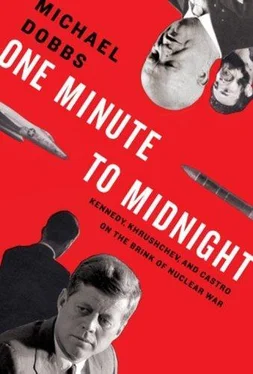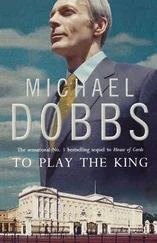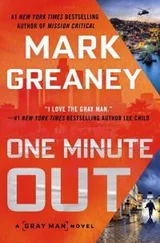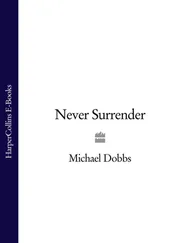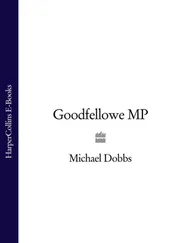State Department officials whose responsibilities had nothing to do with the Soviet Union or Cuba were ordered to arrive at the White House in the biggest limousines they could find. The assistant secretary of state for Far Eastern affairs, Averell Harriman, spent hours in an empty West Wing office on Sunday morning, serving as a decoy for reporters assembled in the lobby. “How long do I have to sit here?” he grumbled.
By Sunday evening, reporters for The New York Times and The Washington Post had pieced together much of the story. The president called the publishers of the two newspapers to ask them to hold back. With some reluctance—JFK had made a similar request prior to the Bay of Pigs, the greatest fiasco of his presidency—they agreed. The headlines in the Monday morning edition of the Post barely hinted at what the reporters really knew:
Major U.S. Decision On Policy Is Awaited; Moves Kept Secret.
—
Rumors Are Many As Top Defense, State Aides Confer.
By Monday afternoon, the secret was almost out. At noon, Marines began evacuating civilians from the Guantanamo Bay Naval Base, escorting 2,810 women and children to waiting warships and planes. Urgent messages were dispatched to vacationing congressional leaders telling them to return to Washington immediately. A military helicopter located Democratic house whip Hale Boggs of Louisiana fishing in the Gulf of Mexico, and dropped him a note in a bottle. “Call Operator 18, Washington. Urgent message from the President.” Soon, Air Force jets were whisking Boggs and other congressional leaders to the capital.
Kennedy stuck with his scheduled appointments, spending forty-five minutes discussing African economic development with the prime minister of Uganda. At 4:00 p.m., he held a cabinet meeting, telling startled cabinet secretaries that he had decided on a naval blockade of Cuba to counter the deployment of Soviet missiles. P-hour—code word for the presidential address to the nation—was still three hours away.
In the meantime, the State Department had launched a vast logistical operation to inform governments around the world of the blockade, which would be termed a “quarantine” in order to sound less threatening. Most foreign governments, including the Soviet one, would hear the news at 6:00 p.m. Washington time, an hour before Kennedy went on television. A few close allies, such as Britain, Germany, and France, received advance notice from special presidential emissaries.
Former secretary of state Dean Acheson was ushered into the study of French president Charles de Gaulle in Paris after flying all night from Washington. Normally mistrustful of American assurances, the general dismissed Acheson’s offer to produce photographic proof of Soviet missile deployment in Cuba with a magisterial wave of his hand. “A great nation like yours would not act if there were any doubt about the evidence,” he announced. Of course, France would support its ally. It was only later that he agreed to examine the U-2 pictures with the help of a magnifying glass.
“Extraordinaire,” the old soldier muttered.
4:39 P.M. MONDAY, OCTOBER 22
The air defense commanders participating in the conference call from NORAD headquarters could scarcely believe their ears. General John Gerhart, commander in chief of the North American Defense Command, wanted them to install nuclear weapons onto fighter-interceptor jets and dispatch them to dozens of airfields in remote locations. The order was to be carried out immediately.
Within minutes, worried commanders were flooding the Combat Center in Colorado Springs with calls. Surely there must be some mistake. Strict safety regulations governed the movement of nuclear weapons. The F-106s that Gerhart wanted dispersed were single-seater jets, whose mission was to destroy incoming Soviet bombers. To load these planes with nuclear weapons and send them across the country violated the “buddy system,” a sacrosanct Air Force doctrine that required at least two officers to be in physical control of a nuclear weapon at all times. In the words of a shocked nuclear safety officer, Gerhart’s order meant that a single pilot, “by an inadvertent act, would have been able to achieve the full nuclear detonation of the weapon.”
The only exception to the buddy system was in time of war, when an enemy attack was considered imminent. While the newspapers were full of rumors about a crisis brewing over Cuba or Berlin, there was no evidence that the Soviets were about to strike.
Many Air Force officers were skeptical about the safety of the nuclear weapon that was to be loaded aboard the fighter-interceptors. Hailed by the Pentagon as a wonder weapon, the MB-1 “Genie” was an air-to-air missile equipped with a 1.5-kiloton warhead, one-tenth the power of the bomb that destroyed Hiroshima. Some pilots considered it “the dumbest weapons system ever purchased.” Rather than hitting a target, the unguided missile was designed to explode in midair, destroying any planes that might be in the vicinity through the sheer force of the blast.
The purpose of a dispersal operation was to prevent U.S. Air Force fighters and bombers from becoming sitting targets for Soviet bombers. To have the capability of responding to a Soviet attack, the U.S. war-planes had to take their weapons with them, even if this meant flying over heavily populated areas to airfields that lacked adequate nuclear storage facilities.
The officers in Colorado Springs checked with their superiors. The reply came back moments later. The dispersal order stood. Soon nuclear-armed F-106s were “booming off the runway” at Air Force bases all across the country without local commanders understanding what was going on.
5:00 P.M. MONDAY, OCTOBER 22
During the first week of the crisis, Kennedy and his advisers had the luxury of being able to consider their options without feeling the need to respond immediately to the pressure of public opinion. By keeping the deployment of Soviet nuclear weapons in Cuba a tightly held secret within the government, they gained a few days of reflection, which proved enormously valuable. They avoided alarming the Kremlin, and did not have to explain themselves constantly to Congress and the press. Had JFK been obliged to make a snap decision on how to respond to Khrushchev the day he found out about the missiles, events could have taken a very different course.
The pace of the crisis quickened dramatically as it moved into the public phase. The change became apparent as soon as congressional leaders filed into the Cabinet Room to receive a private presidential briefing two hours before Kennedy was due to go on television. The onetime junior senator from Massachusetts now had former congressional colleagues looking over his shoulder, second-guessing his decisions. Soon they would be joined by every political pundit in the country.
“My God,” gasped Senator Richard B. Russell, at the news that at least some of the Soviet missiles on Cuba were “ready to fire.”
The chairman of the Senate Armed Services Committee could barely contain himself as he listened to the president present his plan for a naval blockade around Cuba. He felt that a much tougher response was required: an air strike followed by invasion. Giving the Communists “time to pause and think” was pointless because it would only allow them to get “better prepared.” Russell agreed with General LeMay. War with the Soviet Union was all but inevitable, sooner or later. The time to fight it was now, while America was strong.
“It seems to me we’re at the crossroads,” the senator said. “We’re either a world class power or we’re not.”
Kennedy tried to reason with Russell. He wanted the congressional leadership to understand how he had arrived at his decision. A blockade was risky enough: it could lead to war “within twenty-four hours” in Berlin or some other trouble spot. But the risks would be magnified many times by a surprise attack on the missile sites. “If we go into Cuba, we have to all realize that we are taking a chance that these missiles, which are ready to fire, won’t be fired…. That is one hell of a gamble.”
Читать дальше
